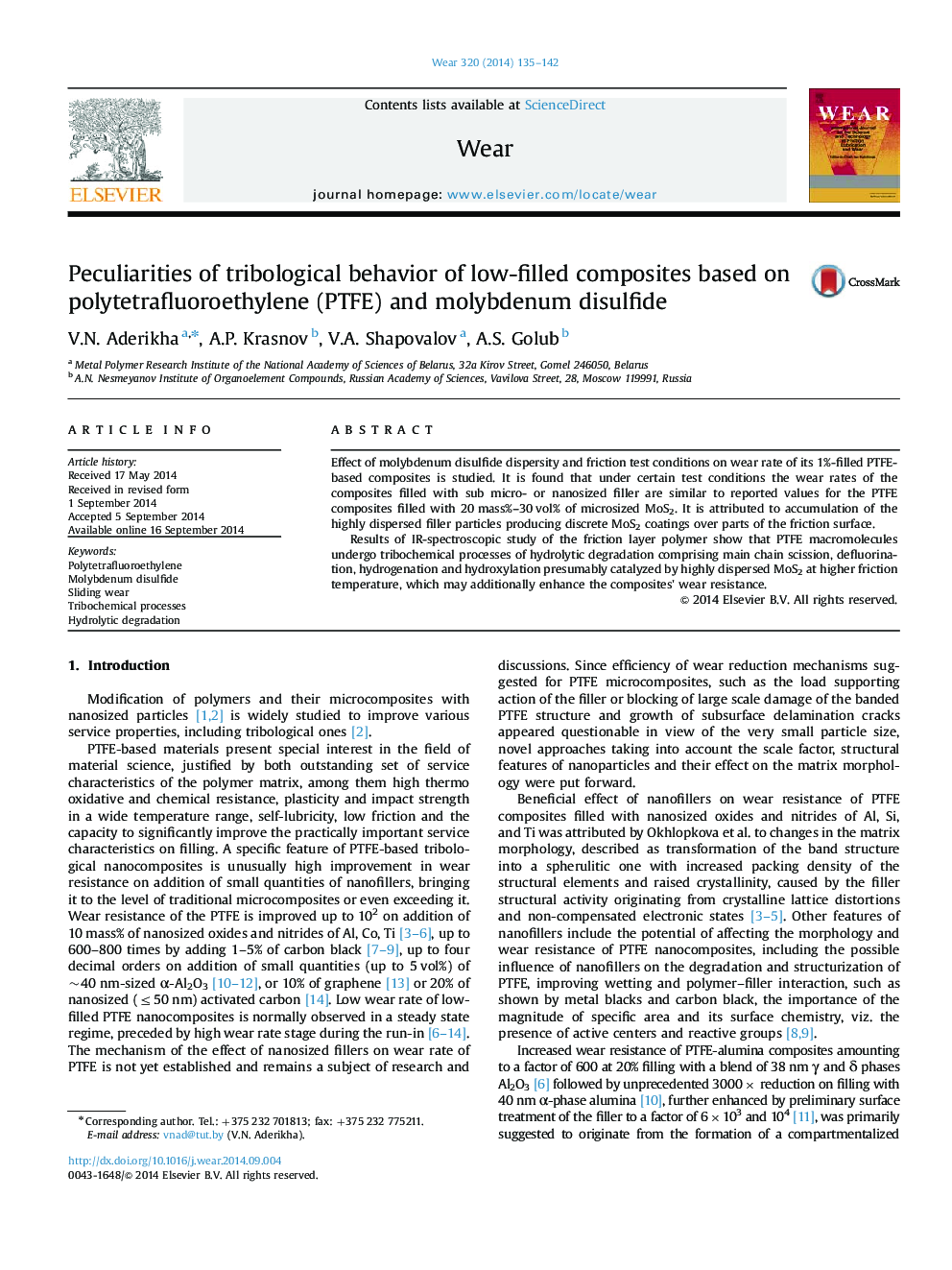| کد مقاله | کد نشریه | سال انتشار | مقاله انگلیسی | نسخه تمام متن |
|---|---|---|---|---|
| 617175 | 1454982 | 2014 | 8 صفحه PDF | دانلود رایگان |

• PTFE filled with 1% of ultrafine MoS2 may show low wear of 20%-filled microcomposite.
• It is caused by MoS2 accumulation and spreading, enhanced by adhesion and softening.
• PTFE resin undergoes tribochemical hydrolytic degradation in low wear rate composites.
• It is probably catalyzed by MoS2 and facilitates the evolution of wear-resistant surface.
Effect of molybdenum disulfide dispersity and friction test conditions on wear rate of its 1%-filled PTFE-based composites is studied. It is found that under certain test conditions the wear rates of the composites filled with sub micro- or nanosized filler are similar to reported values for the PTFE composites filled with 20 mass%–30 vol% of microsized MoS2. It is attributed to accumulation of the highly dispersed filler particles producing discrete MoS2 coatings over parts of the friction surface.Results of IR-spectroscopic study of the friction layer polymer show that PTFE macromolecules undergo tribochemical processes of hydrolytic degradation comprising main chain scission, defluorination, hydrogenation and hydroxylation presumably catalyzed by highly dispersed MoS2 at higher friction temperature, which may additionally enhance the composites׳ wear resistance.
Journal: Wear - Volume 320, 15 December 2014, Pages 135–142